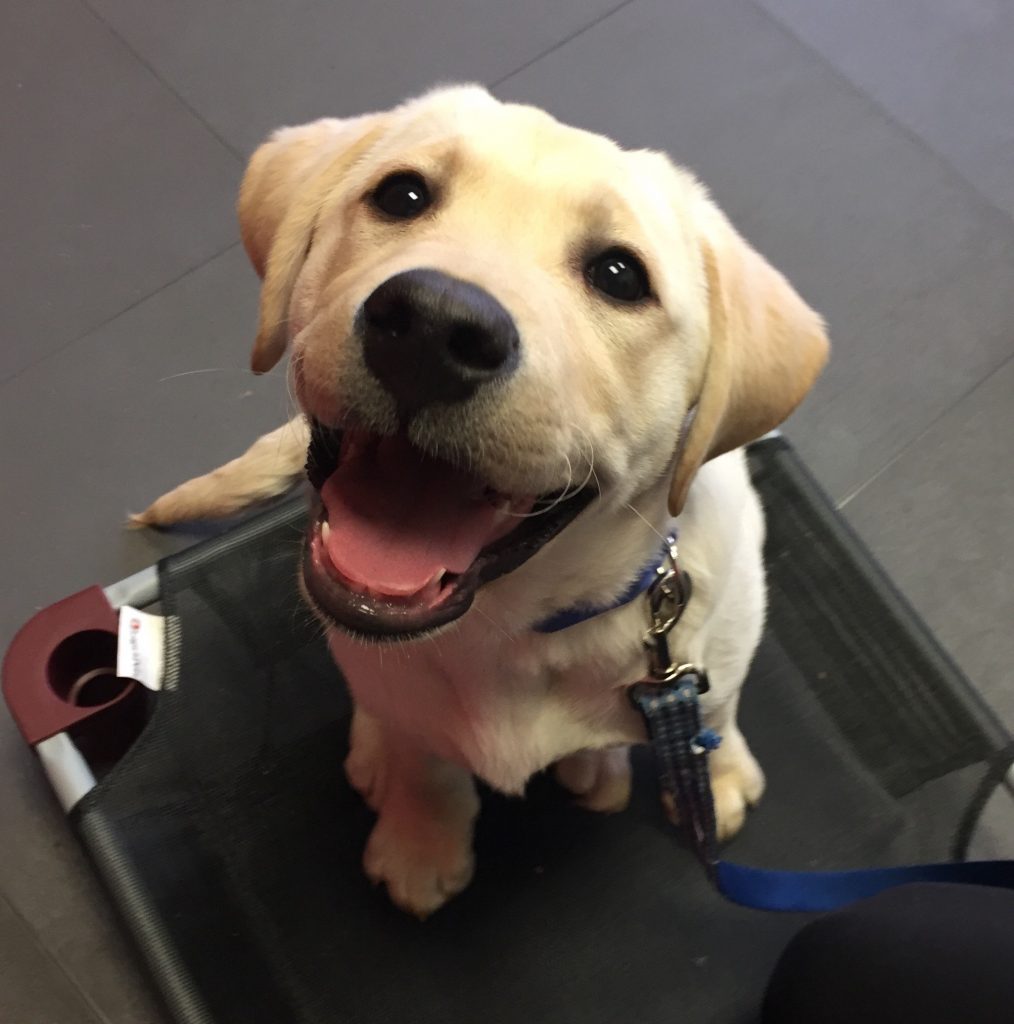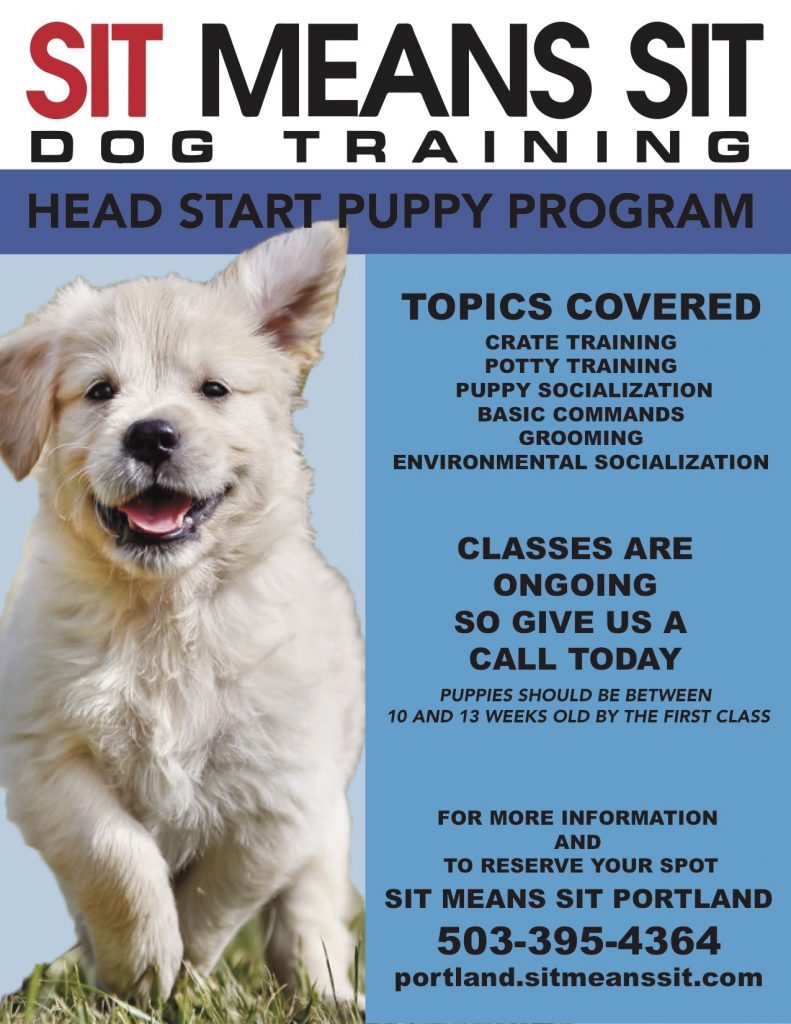Sit Means Sit’s Head Start Puppy Program Sets Pups Up for Success
So you got a puppy. Your puppy is probably pretty cute—and good thing, too—otherwise we’d never forgive the stains on the carpet, the sharp little teeth grabbing onto our hands, the chewed-up socks, books, rugs, children’s toys and wood trim, the new holes appearing in the backyard and the constant, inextinguishable energy. It’s hard to keep up with a pup. She’s so new to the world, she can hardly stop exploring.
If you got your puppy around the 8- to 10-week mark, it’s a good idea to teach her some basic commands. The sooner you start training, the sooner you get off on the right foot. The first few days the puppy spends away from her mother and litter-mates are often the hardest. It’s a big transition for your new pup, and we want to use the training to help our dog understand her surroundings quickly and build a lasting bond with us.
To help with this transition, Sit Means Sit of Portland now offers the Head Start Puppy Program—a four-week class at our facility in Wilsonville. The class covers everything you need to know about owning your new puppy, including crate training, potty training, puppy socialization, basic commands, grooming and environmental socialization. Whether this is your first puppy ever, or a new addition to your four-legged family, everyone can benefit from learning important training techniques.
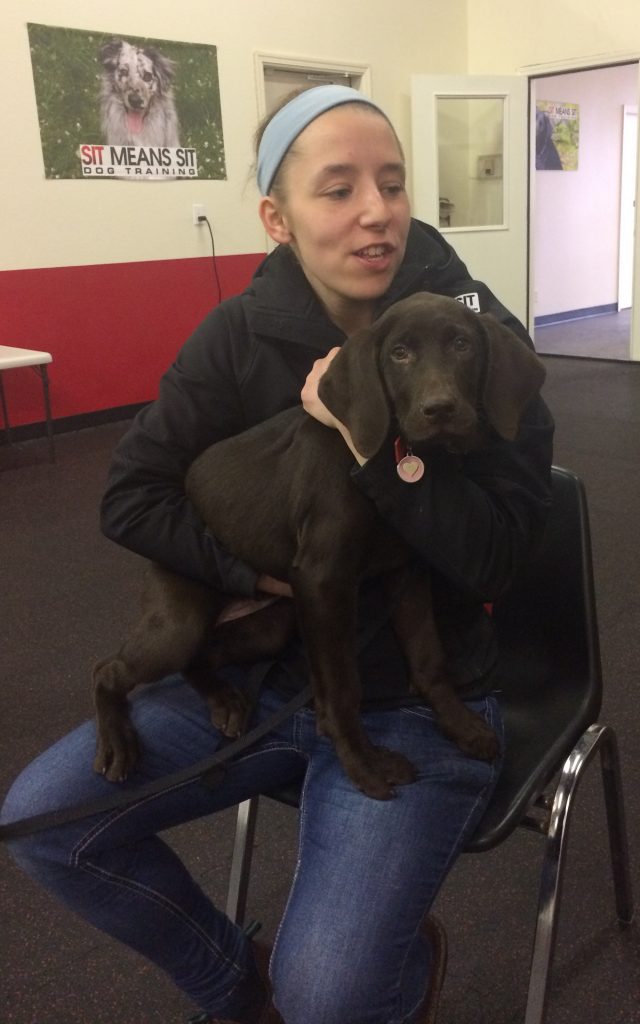
“Getting started on our puppy’s training early helps us avoid six months of hell,” said Sit Means Sit Portland’s head trainer, Brian Uyeno. “During that time is when all the destructive behaviors can crop up because they don’t know any better and they’re exploring everything—usually with their mouths.”
It’s important to show our puppies expectations as soon as we can. That way we can prepare them with a foundation to start obedience. Ten to 13 weeks of age is the optimal time to start training. When they’re younger than 10 weeks, they’re mostly just sleepy puppies, but by four months and older, they’re starting to tear everything up. Right now, they’re fresh slates without too many bad habits and an eagerness to please.
In our class, we teach pups a fundamental command called “place.” Place can be anything with a boundary that dogs can fit all four paws on—think: a dog bed, a park bench, a tree stump, etc. Place is an important command because it teaches our puppies impulse control. While they may want to run around your house like a crazy dog, or jump up on new people coming through the door, they instead have to stay on their place until we give them the release command. That way, they learn they can’t just do whatever they want whenever they want. It will help them to become polite and well-mannered dogs we can share our house with happily.
We also play games like Pass the Puppy, where each puppy is held by all the different puppy owners, getting them used to many people. We touch their ears, paws and teeth to condition them for vet visits and exams, as well as learning how to keep them calm and less squirmy while being held and touched.
We practice exposure to grooming tools like brushes and nail clippers, showing the puppies that grooming is a routine and positive part of their lives. Doing this work when they’re young will help us in the long-run, because they’ll learn that getting brushed is no big deal. Otherwise, dogs who aren’t used to being brushed are a hassle to groom.
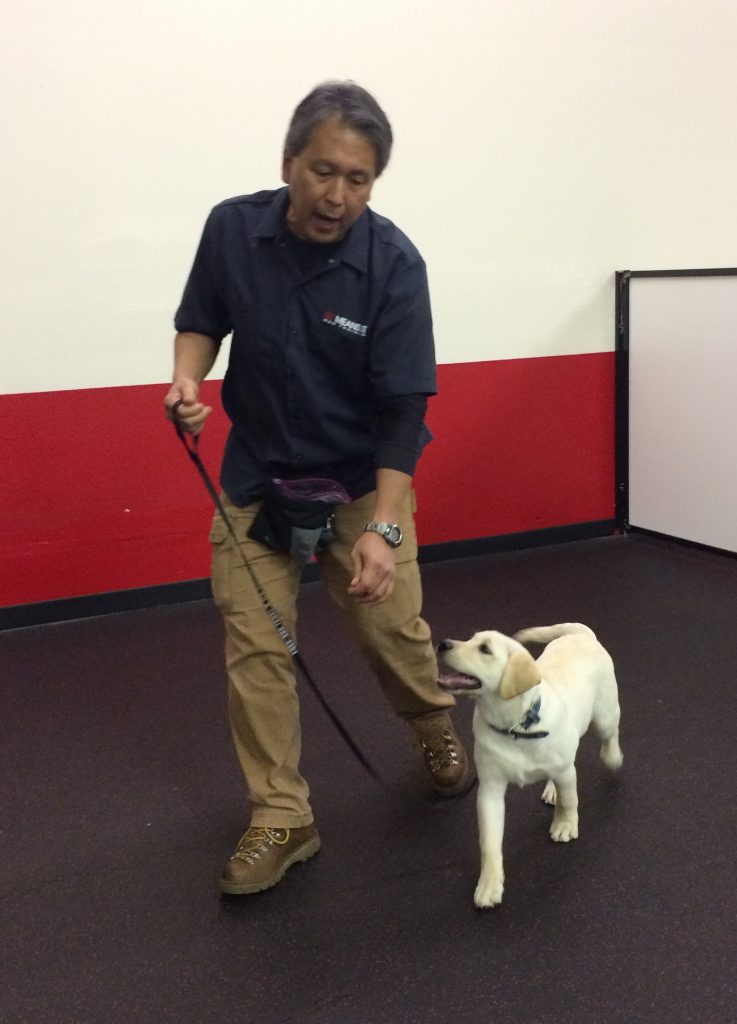
Loose-leash walking is another great habit to start teaching our puppies at a young age. We can’t expect them to heel like an older dog, because they simply don’t have the attention span for it yet. Abandon the idea of a walk around the block. Instead, stay in the backyard or the driveway and focus on keeping their attention on you in a distracting outside environment. Our puppy class teaches you how to walk your pup on a leash, rewarding them for giving you their attention.
Here’s a pro-tip: use a treat, be engaging with your voice, and throw them a little party when they’re looking up at you. Avoid the trap of yelling their name over and over again to gain their attention, because it simply becomes meaningless white noise. Give them treats on the left side of your body, flush with your leg, so they learn that’s where treats come from. If they’re behind you, in front of you, or too far away from you, they don’t get treats—BUT when they’re right next to your left leg, it’s a Treat Jackpot.
It’s also important to start conditioning the “come” command. When we say the word “come,” our dogs should come to us like it’s a 911-emergency—lights and sirens—because having that level of reliable recall can someday help get our pup out of a dangerous situation or even save their life.
To start conditioning the “come” command, clip your puppy to a long leash in the backyard and encourage her to come to you. If she isn’t giving you her attention, try making a kissy sound, or patting your leg, or raising the pitch of your voice to entice her. If she still needs a little help, walk backwards holding the leash until she comes running over. When she does, make it a big, huge party for her full of treats and praise and love and affection. That way, we teach our dogs that coming to us when called is the best thing in the world.
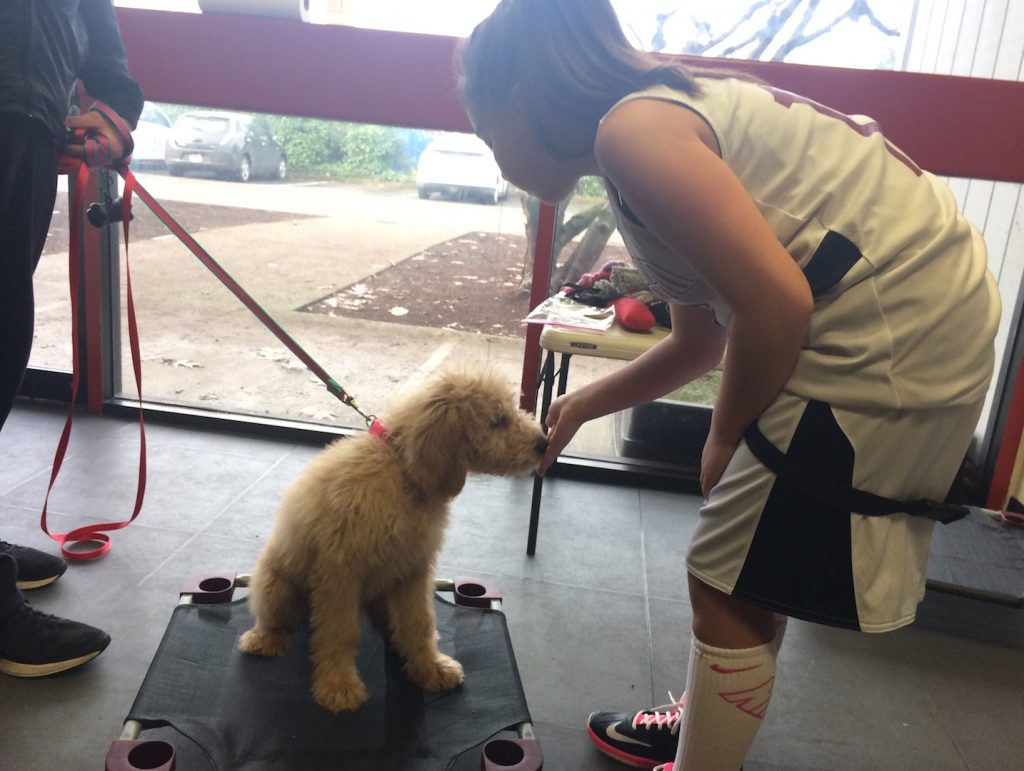
Training our puppies is more than teaching them to sit or stay. It’s teaching them to learn. Showing the pup little tasks like sit, come, down and how to walk on a leash gets him used to using his brain. Training a puppy is different from training a full-grown dog. Their attention spans are so short, they’re not going to learn full obedience yet. You can teach them the sitting position, but the expectation for how long they can hold the sit, or how much distraction can go on around them, needs to be much lower. As he matures, he can use the little tasks he’s learned as building blocks to understand how to use his commands in the real-world. A puppy brain just isn’t developed enough yet to grasp that level of control yet—so don’t get frustrated with your pup. Have fun, celebrate success and keep going. We are building the foundation they will carry for the rest of their lives.
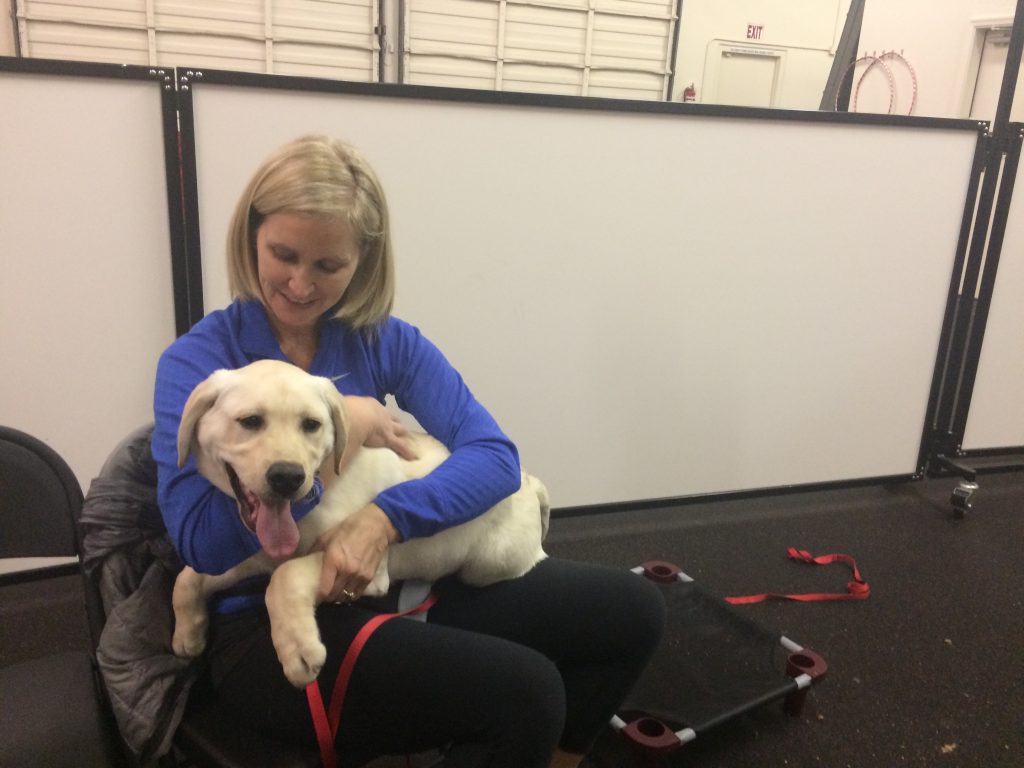
It’s important to understand that training doesn’t stop after puppy class is over. That is only the beginning. Training is a life-long part of owning a dog. The world around our dogs is constantly changing—whether it’s going from the living room to the backyard, the neighborhood park to the mountains, or doggie daycare to the beach. We are here to help them through each situation and show them the expectations and commands they learned in puppy class still apply wherever they go. As they grow older and more mature, we set them up for becoming well-mannered and exceptional companions for the next decade to come.
That’s the beauty of Sit Means Sit Dog Training—we are here for you every step of the way. For those who further their training with us after puppy class, we offer a lifetime warranty. That means no matter what issues come up with your dog in the long-run, we are always here to help.
To get started in our next Head Start Puppy Program, call Sit Means Sit at 503-395-4364 today.

